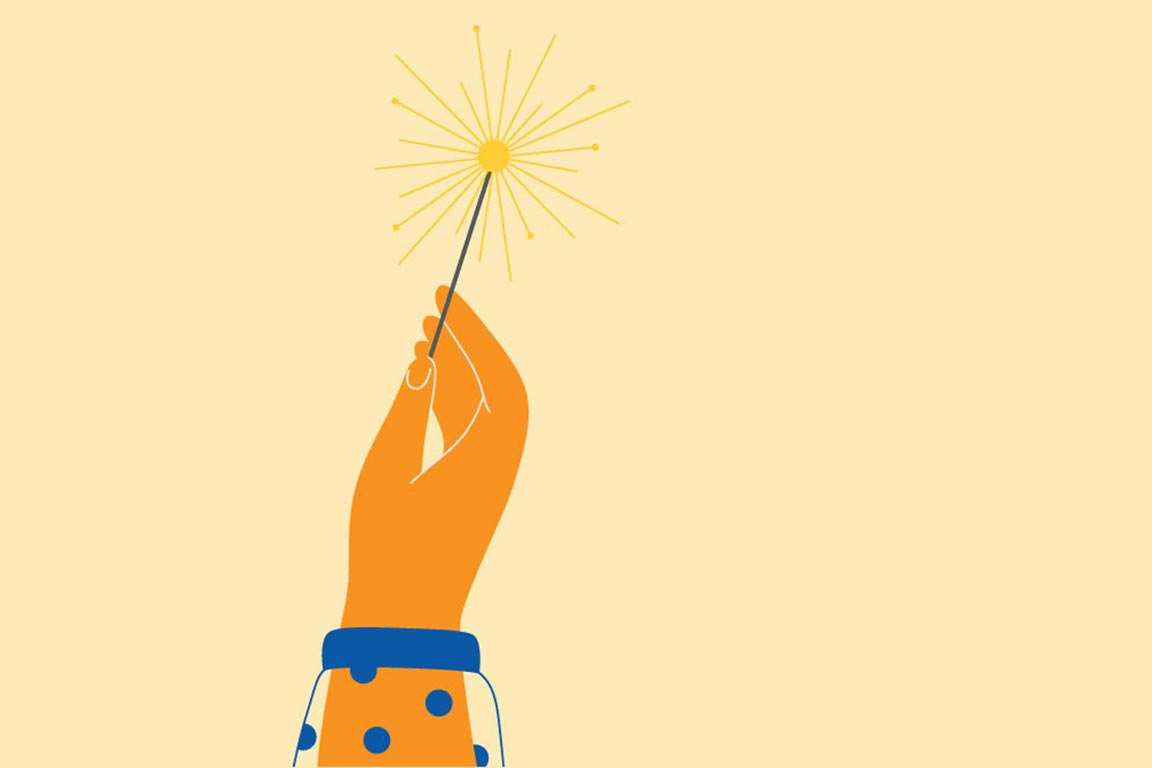Lighting the Spark
On the first day of his Ignite First-Year Seminar, Dr. Harold Braswell (Grad SW ’22) introduces his students to St. Ignatius.
“That’s a guy who originally had dreams of knighthood that he eventually came to see as stupid, in vain. His dreams shattered when his legs were shattered by a cannonball. And how did he create a better life? He read books, and he started writing about them,” Braswell said.
“For me, that’s the basis of the university. It’s simple but profound,” he continued. “I want my course to register on that level with students and orient them to college.”
Braswell’s seminar is called “Life: A User’s Manual.” Like the scores of Ignite Seminars offered each year, the course is meant to show new students what makes teaching and learning at Saint Louis University uniquely transformative.
The Ignite Seminar is relatively new to SLU. Piloted in the fall of 2021, it’s part of the first University-wide common core curriculum. All freshmen and transfer students started taking it during the 2022-23 academic year.
Dr. Ellen Crowell, director of the University core and associate professor of English, said the concept of the seminar combines the Jesuit educational model with a “passion seminar” model common at other universities, where faculty teach a first-year course on something they’re passionate about.
“This means faculty develop a course around the thing that keeps them engaged in their intellectual life while taking into account the process of teaching and learning inspired by Ignatian pedagogy,” Crowell said.
Such wide parameters allow for an endless variety of Ignite Seminar topics: storytelling and city planning; hacking and healing arts; forensics, film, food. About 80 seminars are offered each academic year.
While the subject can be almost anything, each small-group seminar must be grounded in the Ignatian pedagogical paradigm, which involves a five-step cycle: context, experience, reflection, action and evaluation. Professors and students meet each other where they are, with consideration for their lived experiences and shared experience in the classroom. The course curriculum includes continual reflection, plans for action, and evaluating both content and process.
“The Ignite Seminar asks us to step down from the lectern, into the classroom with our students, and to understand that what’s at the center is what we create together, not just what I’m offering them,” Crowell said.
Take her “Reasons for Poetry” Ignite Seminar, for example.
“When I began the class, I taught poems I knew well, and I realized that my students were looking to me for the right answer. So I ditched that. And now I only teach poems that I find the night before and spend no time analyzing before I step into the classroom to discuss with them, so that they understand we are all in this together,” Crowell explained. “The decentering of expertise is really important to the seminar. I’m not teaching them content — I’m teaching them a mode of engagement.”
Engagement is vital in the Ignite Seminar: among students, between student and professor, with the texts and with one’s own experience and how it’s shaping the future.
“These students often come out of a highly structured secondary school environment where their curiosity was not necessarily at the forefront. This course invites students to follow an idea down a rabbit hole in ways that satisfy that curiosity,” Crowell said.
“As long as students leave their seminar feeling invited to bring their whole selves to the table as they engage in intellectual inquiry, we’re doing it right,” she said.
Braswell definitely is doing something right; he was one of two professors to win the inaugural Ignite Instructor of the Year Award.
Below, read more about his course and five other engaging Ignite Seminars.
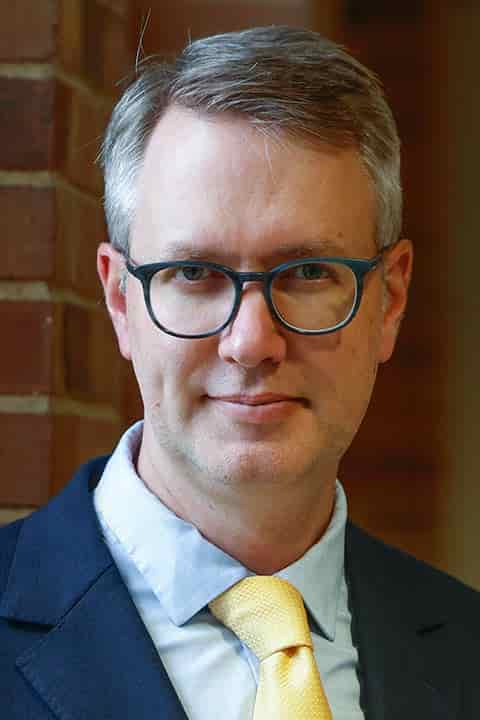
Faculty
Dr. Justin Goodson
Father Joseph Davis Professor
Operations and Information Technology Management,
Richard A. Chaifetz School of Business
Course Description
What should you do (or not do) in a day or a lifetime? This course isn’t for math majors — it’s for everyone who wants to learn about the fundamental structures of the problems we face and to discover something about ourselves.
Objectives
“Mathematics has as much to say about living as philosophy or literature,” Goodson said. “I want to help students take a quantitative view on everyday problems and lifelong challenges.”
Goodson instructs students to apply algorithms to everyday situations. For example, they use a method of operations research to schedule homework throughout the week. They apply sorting principles to their Spotify playlist. They rethink college romance.
“We talk about the optimal stopping principle: Given a set of options, how do you pick one? If you stop early, you might leave the best on the table. If you pass one up, you may never see something as good again. Some of them think trying to squeeze dating into a formula is a bad idea, but others are curious.”
Text
Algorithms to Live By: The Computer Science of Human Decisions by Brian Christian and Tom Griffiths
Requirements
“Students might not find a passion for applied mathematics,” Goodson said. “I just want them to look at the world through a different lens. I want to spark curiosity and passion for scholarship.”
For the semester project, students identify a challenging decision in their lives, apply an algorithm from the course and share how to decide.
Student Evaluation
“Freshman year, I changed my major from business to public health. What I learned in my Ignite Seminar helped me make this decision. I used the optimal stopping algorithm to determine the right time to stop looking for a new major. I used the explore/exploit method; I took different kinds of classes to explore and exploit what I was interested in. I also looked to the overfitting algorithm, which influenced me to think less and use fewer constraints when researching majors.” – Libby Williams, public health and health management major
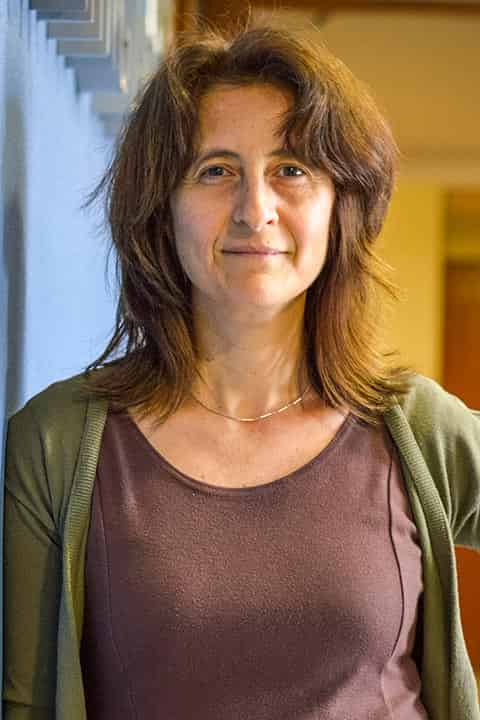
Faculty
Dr. Fabiola Martínez Rodríguez
Associate Professor and Program Director
Visual and Performing Arts, Art History,
SLU-Madrid
Course Description
Take a journey through the cultural history of the Transatlantic world, a complex geopolitical space across which people, food and goods moved, shaping the world today. Start at the iconic image of the “Mona Lisa”— specifically, the one with Beyoncé and Jay-Z in front of it in their 2018 video. From there, explore artworks and museum collections that connect the past with the present while reflecting on the legacies of colonialism and the ongoing struggles for social and racial equality.
Objectives
Martínez aims “to bring art out of the museum and into the lives of students,” exploring how art connects people and cultures. Specifically, she wants to situate her students in Madrid, connecting art to Spanish history and showing how that history is entwined with the Americas.
Martínez, who’s from Mexico, said, “Many of my students come from the U.S.; we come from that encounter of Europe going into the Americas. I want to highlight the issues of diversity and tolerance and race because we’re looking at the enduring legacies of colonialism.”
Texts
Smarthistory: The Centre for Public Art History;
Khan Academy Art History (online resources)
Requirements
The signature project is a written “journey” of the student’s own, informed by their background and academic interests. The journey must include five to seven “stops” — at least two artworks and possibly a song, personal object or photograph. Martínez wants her students to reflect on their past, the journey they started as SLU-Madrid freshmen and where this path may take them.
Student Evaluation
“I learned not to just memorize what was said during the course, but to truly reflect and analyze its context. In this case, the context pertains to my life in regard to the journey that I have and will take. I have also reflected extensively on history, especially if it is related to art and cultural identity.” – Lara Hop, psychology major
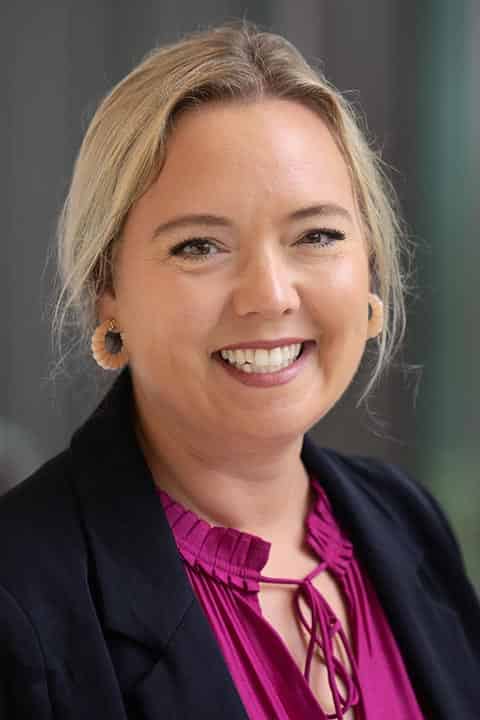
Faculty
Dr. Meadow Campbell
Associate Professor
Center for Anatomical Science and Education
School of Medicine
Course Description
Studying anatomy can be tedious, a list to be memorized. This seminar turns curiosity about the body into a journey of how the field developed. From social taboos that restricted dissection of the human body to modern practices of anatomical gift donation, the field of anatomy spans history. The study of anatomy combines the growth of biological thought and philosophy of science, issues of life and death, race and ethnicity, gender and sex, socioeconomic status, and cultural mores regarding health and well-being. It is intimate yet touches many.
Objectives
“No one has taught anatomy like this before,” Campbell said. She takes a systems-based approach — studying dissection itself first, then skin, the cardiovascular system and so on — but integrates history throughout. She wants students to realize that “we can’t take our current knowledge for granted,” that discoveries change understanding all the time.
Texts
There’s no official textbook, but Campbell uses A History of Human Anatomy by T.V.N. Persaud, Marios Loukas and R. Shane Tubbs as a guide for articles to assign to the class.
Requirements
For the semester project, students choose an anatomical system and collaborate to create slides that are combined into a comprehensive timeline of anatomical history.
Student Evaluation
Campbell appreciates that students approach her class differently. “One of my students is an artist. She sits up front and shares her notebook with me. She’s got skulls in there and gastrointestinal systems. That’s how she processes as I teach.”
“We visited the rare books section of the library, and we were able to look at books
that were literally hundreds of years old! We also had the incredible opportunity
to visit the SLU cadaver lab on south campus, which was a very meaningful educational
experience.”
– Ariela Grad, forensic science and French major
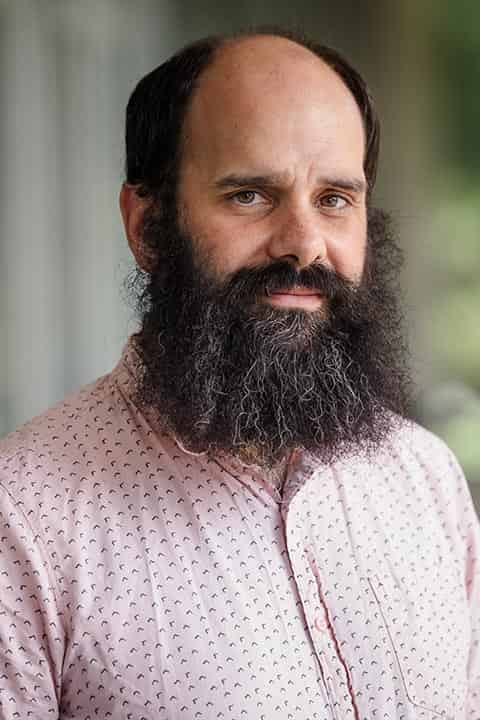
Faculty
Dr. Harold Braswell
Associate Professor
Albert Gnaegi Center for Health Care Ethics
College of Arts and Sciences
Course Description
How do you lead a good life? In this course, read about psychotherapy from some of the most insightful writers of the 20th century, and then relate their ideas to your experience; examine your life in the hope of better understanding yourself and your college journey ahead.
Objectives
For this seminar, Braswell goes beyond his background in health care ethics and disability studies to his interest in psychoanalysis as a therapist. He wants to build trust in his students, to create a space where his students are provoked to think and feel, and where they can freely share what they read and write about.
Texts
Viktor Frankl’s Man’s Search for Meaning, Alison Bechdel’s Are You My Mother? plus primary sources by Sigmund Freud, Frantz Fanon and others (“Dense texts — it’s asking a lot of 18-year-olds,” Braswell said.) The course title comes from a novel by Georges Perec, which isn’t on the reading list.
Requirements
The final assignment asks students to reflect on and write about a difficult moment in their lives.
“I had to make sure that they trusted me enough to do that,” Braswell said. “That was a semester-long process. I shared things I’ve written about my life; it didn’t seem fair to ask them to write about their lives if I’m not going to share about mine.”
He continued, “The papers that I got — I won’t go into detail because it’s between me and them. But I had very high expectations, and I got a lot more.”
Student Evaluation
“Before the class, I agreed with the SLU goal of delivering a liberal arts education
and the Jesuit tradition of cura personalis, caring for the whole self. This seminar
showed me how those ideas play out firsthand. The entire course was centered around
how we find meaning and how we can apply texts we read to our lives.”
— Josie Germain, sociology major
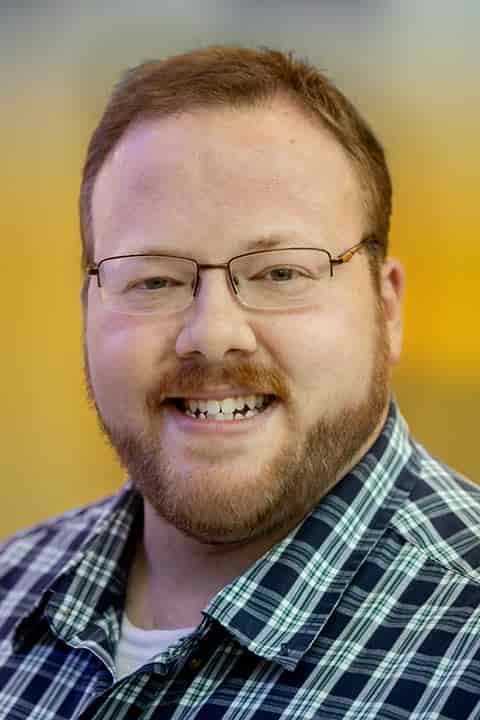
Faculty
Dr. David Ferry
Associate Professor
Computer Science
School of Science and Engineering
Course Description
What does it mean to be human — and how close can a computer get? Think about what is computable and what it means to have conscious human thought — and how those two concepts relate. This course includes an introduction to computer programming and asks students to experience and reflect on how people interact with computers to solve complex, modern problems, as well as how computing is shaping the human experience.
Objectives
Ferry, who specializes in computer systems and artificial intelligence (AI), divides this course into thirds: teaching basic computer programming, introducing his expertise about technology systems and philosophizing about the role of tech in modern lives.
“The way a lot of people make decisions about technology is kind of ad hoc, a gut feeling: Is this good or bad? But it’s 2024; we’re 100-plus years into industrialization and modernization. We have a lot of experience for how technology changes our lives,” Ferry said.
He attempts to give students a framework to evaluate whether a piece of technology is the right solution for the given moment. In so doing, he encourages students to be thoughtful about how they spend their time and to consider what fruitful human activity looks like.
Text
The Most Human Human: What Talking with Computers Teaches Us About What It Means to Be Alive by Brian Christian
Requirements
In addition to several short reflections and programming assignments, students complete a semester-long programming project and research project. For the programming project, students build a “chat bot,” a program that attempts to converse with a user as though it is human. The final research project invites students to explore how technology influences their field, major, hobby, etc.
Student Evaluation
“Professor Ferry was fantastic. Outside of being a great teacher regarding the material, he’s also just an enjoyable person to talk to, which makes a class that much better.” — Brendan Stoll, flight science major
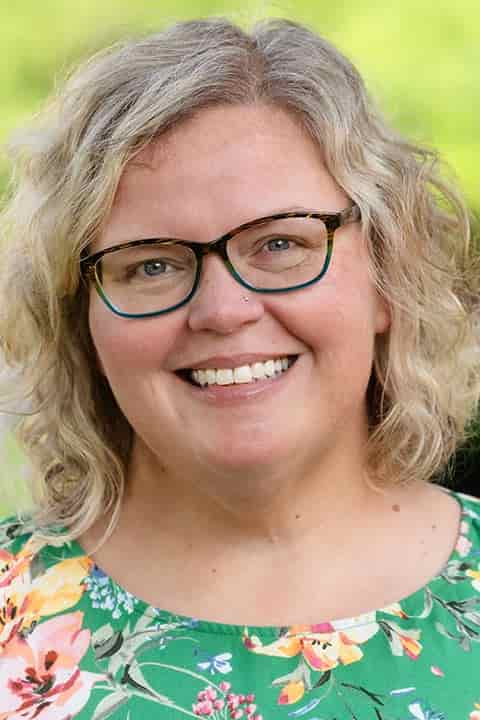
Faculty
Dr. Carolyn O’Laughlin (Grad Ed ’23)
Assistant Professor
Higher Education Administration
School of Education
Course Description
Explore the concept of awkwardness and its impact on social interaction. Through discussion, experiential activities and self-reflection, learn to understand the shared human experience of awkwardness and identify strategies for mitigating it. See how “owning the awkward” can lead to personal development, better communication skills and stronger communities.
Objectives
“Awkward things are the things that make us human together,” O’Laughlin said. She encourages students to connect through vulnerability.
Following the Ignatian Pedagogical Paradigm in this seminar is perfect, she said, because it encourages learning from mistakes.
O’Laughlin said she’s no stranger to awkwardness. She worked for 20 years in college student affairs, lived in student housing until she was 35, and researches neurodivergence in college students. After being a teaching assistant for SLU President Dr. Fred P. Pestello and Provost Dr. Michael Lewis when they taught their Ignite Seminars, O’Laughlin realized her academic experiences could be enlightening to first-year SLU students.
Text
Cringeworthy by Melissa Dahl, who led a class discussion virtually after O’Laughlin cold-contacted her
Requirements
“I want them to become learners motivated by curiosity,” O’Laughlin said. “So I encourage them to bring their whole selves to the topic, their own awkward experiences.”
She calls her classroom a nest, a safe space to explore the uncomfortable. On the first day, the class divides into groups to build actual nests, led by an instructor over Zoom; it’s meant to break the ice while echoing awkward virtual interactions. The class also participates in an improv workshop led by a St. Louis troupe, a forced-choice activity led by SLU’s Division of Diversity and Innovative Community Engagement, and more.
The semester project is an annotated bibliography about something the student finds awkward. Topics have been as broad as menstruation and as specific as forgetting the name of a person you just met.
Student Evaluation
“This class gave me tools that increase my social awareness and make me a more empathic
and understanding member of the SLU community.”
– Collin West, economics major
Photos by Sarah Conroy


















